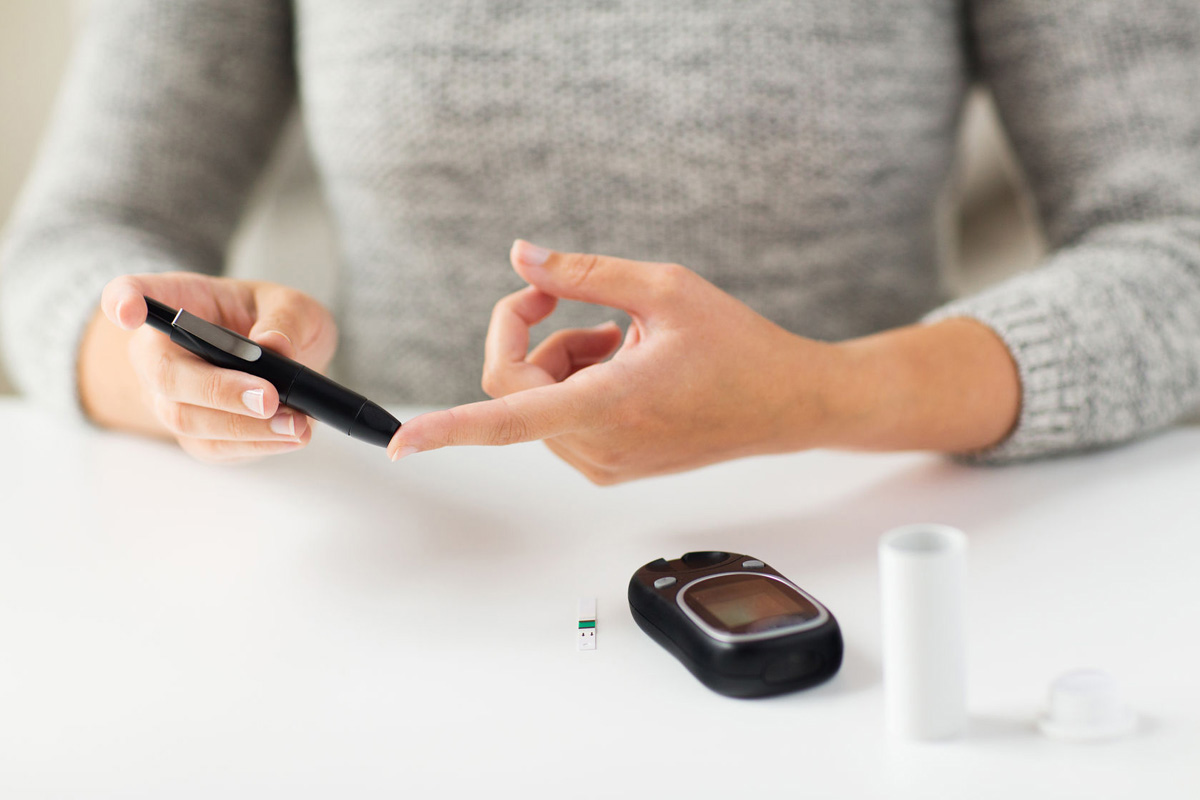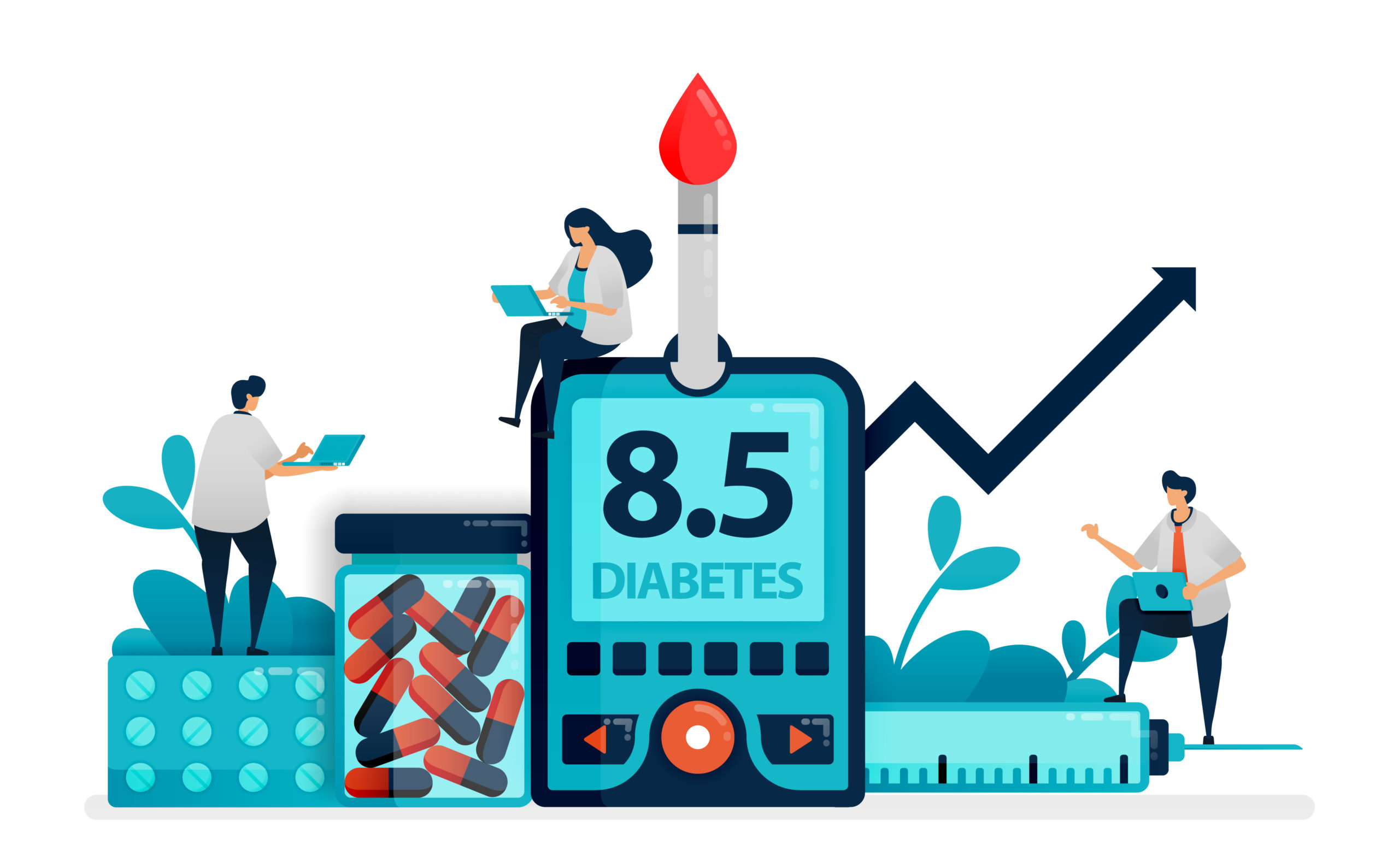Home » How Glucose Levels Impact Your Life Insurance Premiums
How Glucose Levels Impact Your Life Insurance Premiums

Matt Schmidt



Chris Stocker
To learn about Diabetes Life Solutions commitment to transparency and integrity, read our Editorial Disclosure
Last Updated on September 10, 2025
For anyone who has an adverse health condition, qualifying for a life insurance policy can become more difficult. Especially for a person with Diabetes. When a person with Diabetes is seeking out life insurance coverage, glucose levels will play a key part in determining their life insurance rates. There are many life insurance companies to consider when applying for coverage, and every company will view your glucose readings and your overall health profile differently. Don’t work yourself to death researching this on your own. Rather contact us at 888-629-3064. Even with an elevated Glucose history, you most likely will still qualify for life insurance.
When an underwriter reviews your health profile, they will be looking for anything that may have an impact on your life expectancy. This is what’s referred to as underwriting. Therefore, oftentimes applicants who have various health issues are either turned down for coverage, or they are rated as Substandard and required to pay an additional amount of premium in order to compensate for the increased risk to the insurer. Glucose levels impact your life insurance premiums, so if you’re a diabetic, let us help you find the best life insurance for diabetics. We’ll make the life insurance application process as simple as possible for you.

Those who have either Type 1 or Type 2 diabetes may oftentimes find that their glucose levels will have an effect on the amount of premium that they are charged for their life insurance coverage. In fact, of the many criteria that go into pricing life insurance coverage for someone with diabetes, glucose level is considered to be the most important. This is because this particular level indicates to the insurer how well the individual is controlling his or her diabetes condition. Depending on your readings, you may even want to consider a no medical exam life insurance policy.
Every life insurance company will view your glucose, and diabetes history differently. This is why it’s so important to work with an independent agent, who can ‘shop’ out your health profile to multiple life insurance companies. Here at Diabetes Life Solutions, we are here to help anyone in the Diabetes community with their Life insurance needs. We only work with those who are living with Diabetes, and there’s no other website solely dedicated to life insurance for diabetics like ours. To receive information please simply contact us, or complete a ‘quote request.’
Quick Article Guide
Here’s what we’ll cover in this post:
What Does A Glucose Reading Indicate?
The amount of glucose, or “sugar,” measured in the human body’s blood will change throughout the day and night. These changes will typically depend upon what, when, and how much a person has eaten, as well as whether or not the person has exercised.

A “normal” fasting blood sugar level is typically between 70 and 99 mg/dL. However, those who have diabetes will have difficulty keeping their blood sugar at normal levels and will need to frequently monitor it in order to ensure that they take the proper amount of insulin or other medications for diabetes in order to regulate it.
An individual who has diabetes should ideally have an average fasting glucose reading of less than 130 or 140 mg/dL. (A “fasting” glucose reading means a reading that is taken before the individual has eaten breakfast or has food within his or her system for the day). The very best readings for these individuals are typically in the range of between 100 to 120.
We understand that everyone who lives with diabetes will have different Glucose readings. As you know, everyone’s body is different, and responds differently to the recommended treatment for diabetes. In the event you may be following all your Doctors orders but have an elevated Glucose history, it doesn’t mean you will be denied coverage. Because of this, when our clients apply for life insurance, we are ready to explain to underwriters the situations behind your health profile, and address any concerns with elevated readings.
Simply stated, the more in range your Glucose levels are, the more companies you’ll be able to choose from for life insurance. And in some cases, a ‘lower’ Glucose reading could be viewed as a ‘flex credit’ and lead to lower rates.
Other Important Testing For Those Who Have Diabetes
For individuals who have diabetes, there is other important testing that will likely be performed. For example, doctors will typically perform a test called the A1C in diabetics. This test will tell what the individual’s average blood glucose levels are over a long period of time, such as two or three months.
The A1C test can be a good test to have performed because oftentimes, a blood glucose test may not always be accurate, whereas the A1C can provide a more “averaged out” reading for a person.
As you know, everyone who has Diabetes, has various degrees of control, with their A1C. Sadly, lots of life insurance companies view a person’s A1C reading as the main determining factor into the rates they will offer. Meaning a person could be doing everything possible from eating, to exercising, to taking medications regularly, and their body just won’t respond the way it should.
Good news is, we know of multiple companies that will review your COMPLETE health profile, and not necessarily use a higher A1C reading against you. This is what separates us, from other agencies!!! We have been able to help certain individuals with high A1C readings in the 10’s find affordable life insurance coverage.
We also wanted to share a list of other readings companies will test for when you complete a blood and urine test.
- BUN – Used to evaluate and diagnose kidney disease.
- Creatinine – Used to assess kidney function.
- Estimated GFR – Measures the functions of the kidneys.
- Alkaline Phosphatase – Checks for bone or liver disorders.
- AST – Tests for liver, heart, or muscle disorders.
- ALT – Test for liver disease.
- GGT – Alcohol use, certain medications, and liver disease.
- Blood Alcohol – Tests for ethanol in your blood.
- Total Protein – Screens for kidney and liver disease.
- Albumin – Tests for advanced liver disease.
- Globulin – May indicate infections, immune disorders, etc.
- Cholesterol – Measures the amount in your bloodstream.
- HDL Cholesterol – The “good” cholesterol.
- LDL – The “bad” cholesterol that clogs arteries.
- Cholesterol/HDL Ratio – Measures total cholesterol to HDL.
- LDL/HDL Ratio – Used to calculate heart disease risk.
- Triglycerides – May indicate heart disease, alcohol use.
- PSA – Used to evaluate prostate cancer risk.
Source: Riskquoter.com
Diabetic Tests And Life Insurance Premium Rates
When coming up with premium rates for life insurance coverage, the underwriters will review the results of various tests that are performed. Those who obtain a reading that is lower than 7.7 on their A1C test will typically be able to obtain the best rates on life insurance coverage. In these cases, a Standard rating is usually possible – and in some cases even a Preferred rating is possible, provided that health is excellent in all other aspects.

We’ll note that Preferred ratings will usually only be considered if you were diagnosed at age 50 or later with Type 2 Diabetes, and have NO other significant health issues. Preferred rates are hard to be approved for, but not entirely impossible.
Ideally, you want to make sure that your labs are within normal ranges. If you have questions as to what ranges companies are using to underwriter diabetics, simply let us know. We are happy to share this with you, and make sure it’s a good time to apply for life insurance. In some situations, it may be best to postpone applying, and to work on your control of your diabetes for an extended period of time.
Those who are fall into the range of 7.8 to 8.5 on their A1C test may also be able to obtain Standard rates on life insurance coverage. When we use the terminology of ‘Standard’ rates, this means no extra ratings due to a history of Diabetes. Depending on your overall health profile, we know of a few companies who may offer rates, without any extra premiums due to your Diabetes.
However, those who fall in the range of 8.5 and over usually can still obtain coverage. Depending on the various companies who offer coverage, you may be accessed extra premiums, for not having optimal control of your Diabetes. In these cases, the applicant is likely to be paying extra premiums compared to what a Standard insured would be charged for the same amount of life insurance coverage.
In some cases, it may make sense to apply for a policy where there is no medical exam required, and there are very fewer questions required to be answered on the application for coverage. Life insurance companies will ask basic health questions, do a prescription drug background check, and a Medical Information Bureau review, to determine your eligibility. In some situations, life insurance companies may require a review of your most recent diabetes medical records. The information in your records will determine the final ratings and offers.
One trend we are seeing with life insurance companies is that non medical exam options are becoming more common. It’s quite possible to receive the same types of rates without completing an examination that others who are going through the full underwriting process receive. Not to mention, applications are getting approved in a matter of days, instead of weeks.
Everybody’s health profile is different. Please understand that there’s no one life insurance company that is going to be the best for everybody. This is why it’s important to communicate with an agent, and share with them your personal health history before fasting for life insurance exam. Your diabetes and health history will help dictate what life insurance companies may be best in your personal situation.
Don’t let this all be confusing, as we are here to help. Visit with us, and we can let you know if a non medical exam life insurance policy is your best, or only option available to you. Since we only work with the Diabetes community, we’ll only provide you real and accurate life insurance information. Many people think that their current Glucose readings will prevent them from obtaining life insurance. That’s simply not the case in most situations.
For some individuals with Diabetes, they may have ‘high’ A1C readings, or forms of diabetes complications such as Neuropathy, Retinopathy, or amputations. In situations like this, the only options for life insurance may be guaranteed acceptance policies.
If not want to do a medical exam or insurance blood test fasting, you’d still have options such as Term Life Insurance, and Whole Life Insurance available to you. There are multiple types of life insurance that you can qualify for, while skipping a paramedical examination. The key is to speak with an agent, share your health profile, and let them provide to you your life insurance options.
What Else Do The Underwriters Want To Know?
In addition to information about glucose levels and A1C readings, the life insurance a1c levels underwriters will also review information regarding your:
– Age
– Gender
– Weight (as it pertains to your height)
– Use of Diabetes technology
– Smoking status and / or tobacco usage
– Alcohol usage
– Marital status
– Occupation and income (if applicable)
– Lifestyle (participation in dangerous hobbies or habits)
– Foreign travel
– Overall health history
– Family health history
The applicant will also typically be required to take a medical examination as a part of the overall underwriting process. This will usually entail meeting with a paramedical professional who will take a blood pressure and heart rate reading. It will also require the submission of a blood and urine sample. These samples will be tested for particular health conditions that may pose a risk of claim to the life insurance company.
In addition to reviewing your lab results, and answers to basic health questions, most companies will review the last three to 5 years of your medical and Diabetes records.
Once all of the information and samples have been reviewed by the life insurance a1c levels underwriters, a decision regarding coverage can be made. At that time, a decision regarding the amount of premium to be charged can also be made. Underwriters will use a person’s complete health profile, to determine what life insurance underwriting rating they qualify for.

From start to finish, it may take anywhere from three to six weeks, for insurance companies to make a decision. While applying, you are not locked into any company, term length, amount of coverage, or any type of policy. Once the various offers are made, an life insurance a1c levels agent can present to you all of your options.
Where To Obtain Life Insurance Coverage For Those With Type 1 And Type 2 Diabetes
When seeking life insurance coverage with Type 1 Diabetes or Type 2 diabetes, it is usually best to work with a company or agency that has access to multiple insurance companies This way, you will be able to make comparisons among many different policies, as well as policy premium quotes. You’ll also want to work with an agent, who specializes in working with the Diabetes community.
Honestly, we feel strongly that there’s no better organization than Diabetes Life Solutions to help people with Diabetes find the best policy possible. We’ve spent years identifying the life insurance companies that are the most competitive price wise, and the ones that truly understand how to underwrite the Diabetes community. We’re friendly, honest, and very serious about the services we provide.
You need to avoid agencies who claim they specialize in many different types of health conditions. If they claim to specialize in every type of health condition, that agency would be a “generalist” type of agency, as compared to a Specialty insurance agency such as Diabetes Life Solutions. Working with the wrong agent or ‘group’ could lead to you paying higher premiums on your insurance.
In many cases, life insurance companies do not use the very same underwriting criteria. This means that while a person may be declined for coverage by one insurer, they may be accepted by another. If you apply with only one insurer, you are bound by only one set of underwriting rules. However, by working with a company that has access to many insurers, you can increase your chances of approval exponentially, and improve your chances of getting the best possible life insurance rates.
If you are an individual with normal Glucose readings, and overall great control of your Diabetes, you’ll most likely have no issues finding life insurance coverage. Now if you have a history of elevated Glucose levels, obtaining coverage might be a little more challenging and you might have fewer companies to choose from. But in our experiences, nearly 90% of the people we work with qualify for life insurance.
When shopping for life insurance coverage, we can help. We work with many of the top rated life insurance companies in the industry today. We can help you to compare policies and premiums quickly and easily. In order to get the process started, just fill out the form on this page.

Applying for life insurance with Diabetes doesn’t have to be hard. The process is probably easier then you can imagine. If you choose to apply for policies that require a review of medical records, and a blood and urine test, those results can be used to show the multiple life insurance companies your complete health profile. There’s no need to fill out several applications, or undergo multiple examinations. When you work with our agents, we’ll use one set of records and lab results to obtain life insurance offers for our clients.
Should you have any questions regarding how glucose levels affect your life insurance premiums, how to obtain life insurance coverage with diabetes, or simply about life insurance coverage in general, please feel free to call us, toll-free, at (888) 629-3064. We’re here to help. Being a part of the Diabetes community , we understand the process that people with Diabetes must complete, when seeking life insurance coverage.

Matt Schmidt
Matt Schmidt is a nationally licensed diabetes insurance expert. Over this time frame he's helped out over 10,000 clients secure life insurance coverage with Diabetes. He's frequently authors content to Forbes, Entrepreneur, The Simple Dollar, GoBanking Rates, MSN, Insurancenews.net, and Yahoo Finance and many more.
Matt Schmidt is also the Co-Founder of Diabetes Life Solutions and Licensed Insurance agent. He’s been working with the Diabetes community for over 18 years to find consumers the best life insurance policies. Since 2011, he has been a qualified non-member of MDRT, the most prestigious life insurance trade organization in the USA
Find out how much life insurance with Diabetes Life Solutions costs